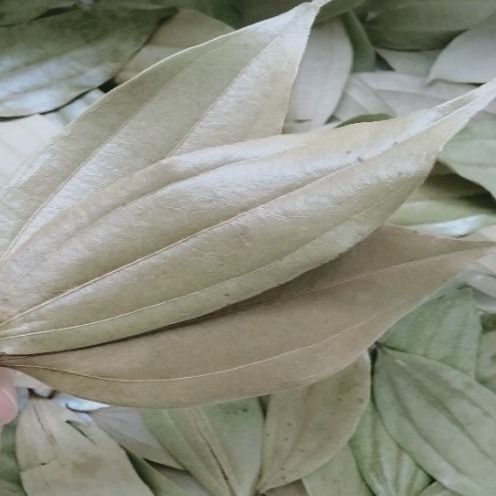Chinese bay leaves, also known as Chinese cassia leaves or Chinese cinnamon leaves, are not actually related to the bay laurel leaves commonly used in Western cuisine. Instead, they come from the Cinnamomum cassia tree, the same tree that produces Chinese cassia cinnamon.

Here are some key points about Chinese bay leaves:
1.Appearance: Chinese bay leaves have a similar shape to bay laurel leaves but are typically larger and thicker. They have a deep green color and a glossy appearance.
2.Flavor and Aroma: Chinese bay leaves have a strong, aromatic flavor with warm, spicy notes similar to Chinese cassia cinnamon. However, they are generally milder and less pungent than the bark of the cinnamon tree. They impart a warm, slightly sweet flavor to dishes.
3.Culinary Uses: Chinese bay leaves are commonly used in Chinese cuisine, particularly in braised dishes, soups, and stews. They are added to the cooking liquid to infuse it with flavor and aroma. Chinese bay leaves are often used in combination with other spices and aromatics such as star anise, cloves, and ginger to create complex and flavorful dishes.
4.Medicinal Properties: Like other parts of the Cinnamomum cassia tree, Chinese bay leaves are believed to have medicinal properties and have been used in traditional Chinese medicine for centuries. They are thought to aid digestion, improve circulation, and have anti-inflammatory and antimicrobial effects. Chinese bay leaves are sometimes used to prepare herbal teas or infusions for medicinal purposes.
5.Availability: Chinese bay leaves can be found in Asian markets, specialty spice shops, and online retailers that specialize in Chinese ingredients. They are often sold dried and can be stored in a cool, dry place for an extended period.
Overall, Chinese bay leaves are a versatile ingredient that adds depth and complexity to Chinese dishes. While they are similar in appearance to bay laurel leaves, they have a distinct flavor profile and are used in different culinary traditions.